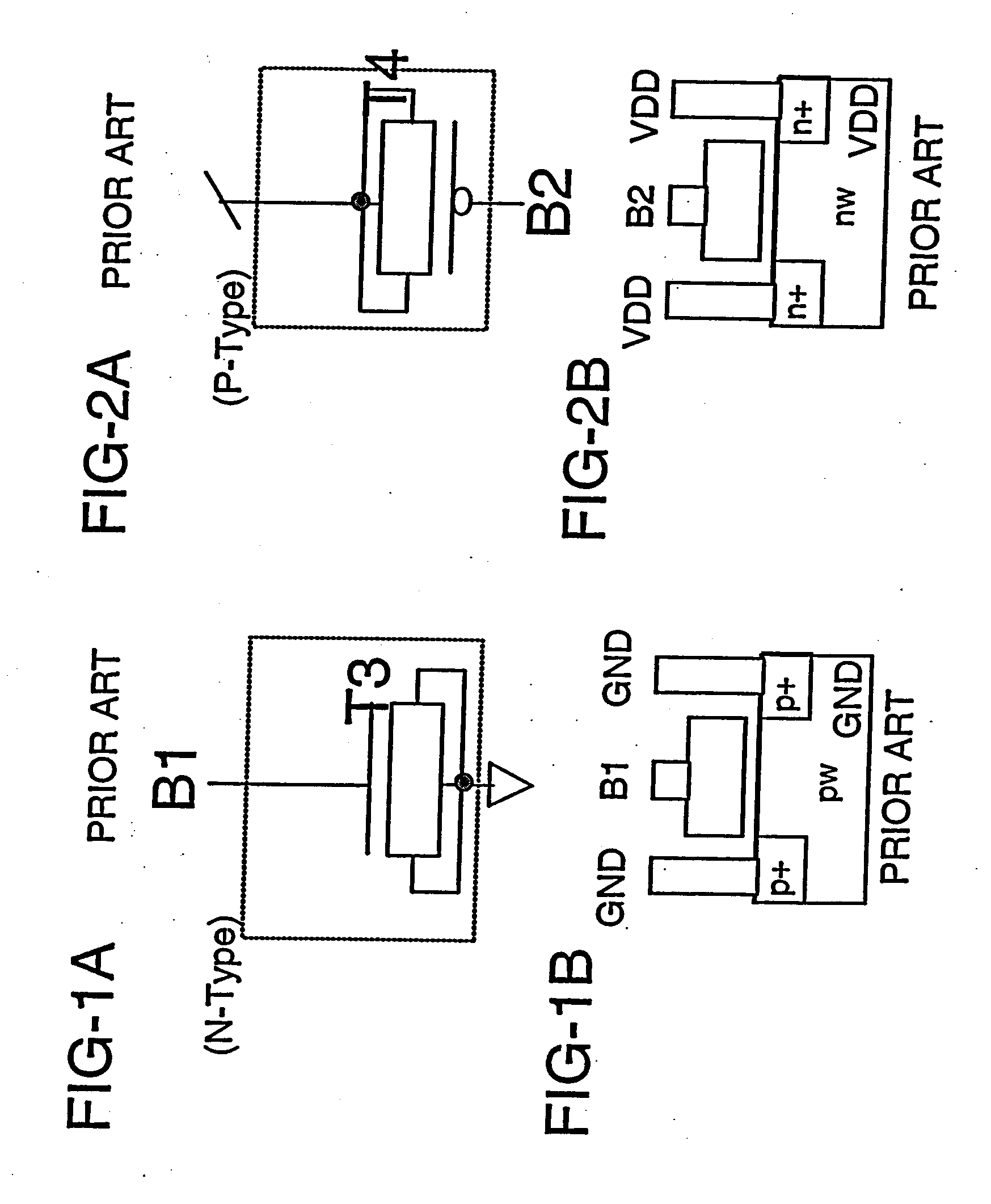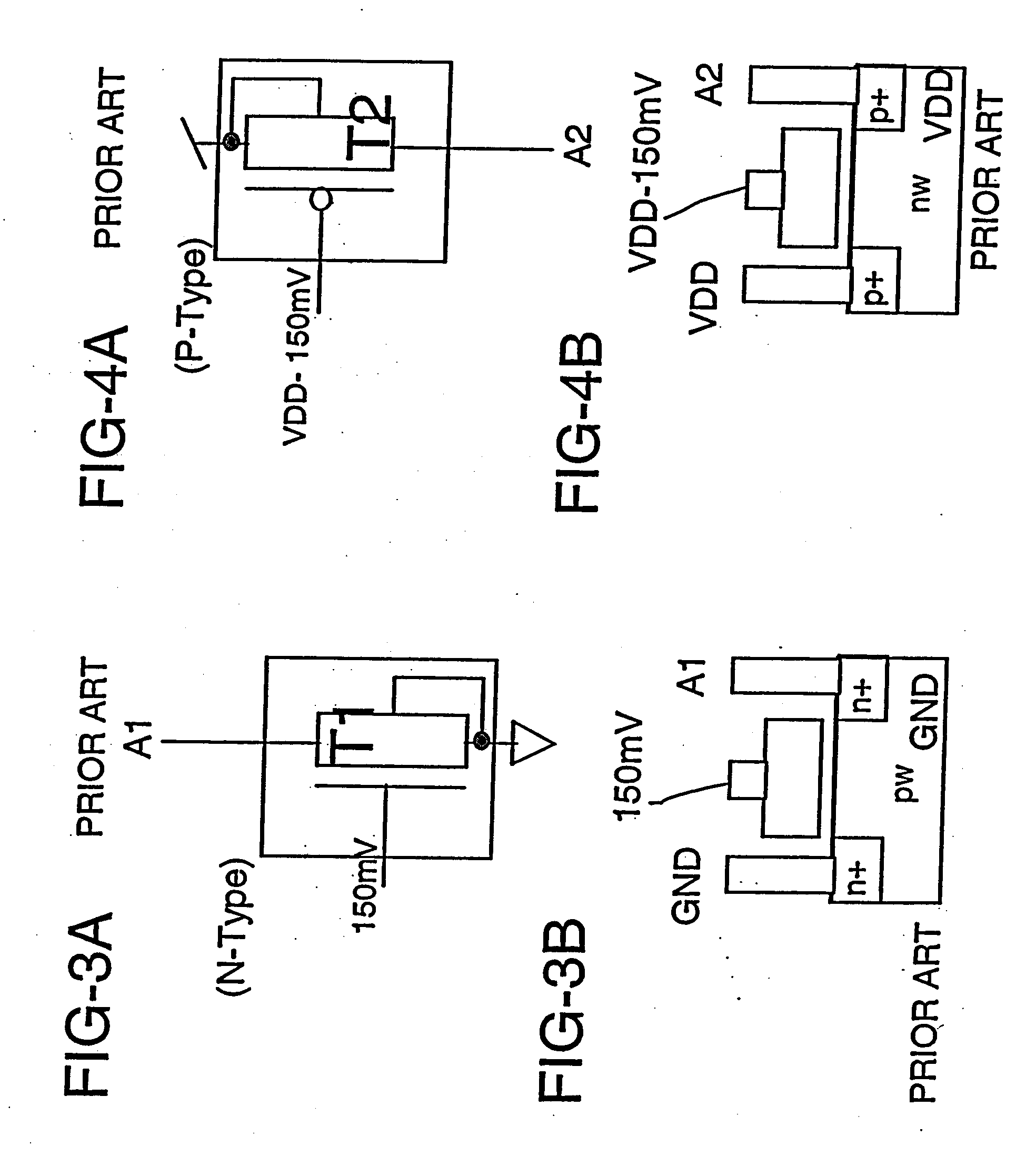Universal CMOS device leakage characterization system
- Summary
- Abstract
- Description
- Claims
- Application Information
AI Technical Summary
Benefits of technology
Problems solved by technology
Method used
Image
Examples
Embodiment Construction
[0043] Hereinafter will be described the n-MOS and p-MOS leakage monitoring apparatus of the present invention. Since the circuit conFIGurations for testing n-MOS and p-MOS differ significantly from each other, they will be described independently.
[0044] N-MOS Leakage Measuring Apparatus
[0045] As previously stated, leakage monitoring devices of the class shown with reference to the circuits illustrated in FIGS. 1, 3 and 5, only one class of leakage, whether testing the gate, sub-threshold and junction leakage, respectively, can be tested at one time. The circuit is designed to test both normal and abnormal types of leakage for any classes of CMOS devices, which differ from each other by several orders of magnitude.
[0046] Regarding the present invention, and with reference to FIG. 7A, the digital bits DIG0>, DIG1> . . . DIG are used to size the reference current for sensing the leakage current. A binary decoding technique is, preferably, used to achieve high resolution when taking...
PUM
 Login to View More
Login to View More Abstract
Description
Claims
Application Information
 Login to View More
Login to View More - R&D
- Intellectual Property
- Life Sciences
- Materials
- Tech Scout
- Unparalleled Data Quality
- Higher Quality Content
- 60% Fewer Hallucinations
Browse by: Latest US Patents, China's latest patents, Technical Efficacy Thesaurus, Application Domain, Technology Topic, Popular Technical Reports.
© 2025 PatSnap. All rights reserved.Legal|Privacy policy|Modern Slavery Act Transparency Statement|Sitemap|About US| Contact US: help@patsnap.com



